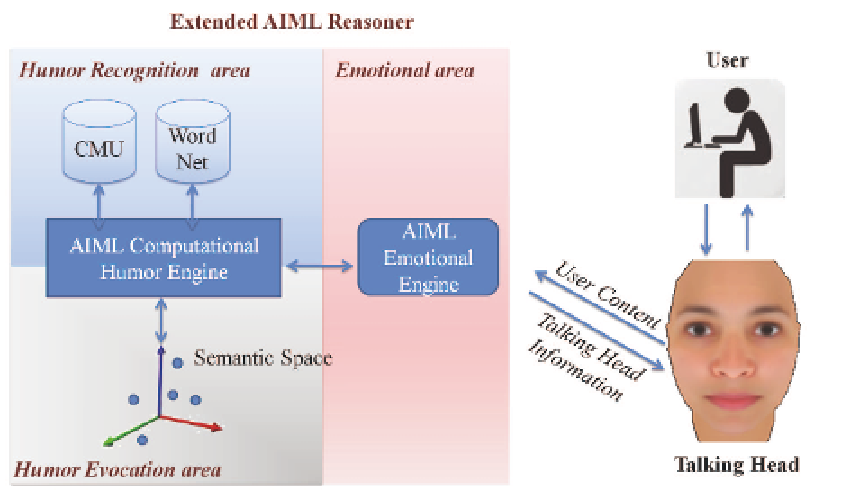Image Processing Reference
In-Depth Information
particular the reasoner is composed by a humoristic area, divided in turn in a humoristic
recognition area and in a humoristic evocation area, and an emotional area. The first area
allows the chatbot to search for the presence of humoristic features in the user sentences,
and to produce an appropriate answer. Therefore, the emotional area allows the chatbot to
elaborate information related to the produced answer and a correspondent humor level in
order to produce the correct information needed for the talking head animation. In particular
prosody and emotional information, necessary to animate the chatbot and express emotions
during the speech process, are communicated to the Talking Head component. The TH system
relies on a web application where a servlet selects the basis facial meshes to be animated, and
integrates with the reasoner to process emotion information, expresses using ad hoc AIML
(Artificial Intelligence Markup Language) tags, and to obtain the prosody that are needed to
control animation. On the client side, all these data are used to actually animate the head. The
presented animation procedure allows for considerable computational savings, so both plain
web, and mobile client have been implemented.
Fig. 1. EHeBby Architecture
3. EHeBby reasoner
The chatbot brain has been implemented using an extended version of the ALICE ALICE
(2011) architecture, one of the most widespread conversational agent technologies.
The ALICE dialogue engine is based on a pattern matching algorithm which looks for a match
between the user's sentences and the information stored in the chatbot knowledge base. Alice
knowledge base is structured with an XML-like language called AIML (Artificial Intelligence
Mark-up Language). Standard AIML tags make possible for the chatbot understanding
user questions, to properly give him an answer, save and get values of variables, or store
the context of conversation. The basic item of knowledge in ALICE is the
category
, which
represents a question-answer module, composed a
pattern
section representing a possible user
question, and a
template
section which identifies the associated chatbot answer.
The AIML

